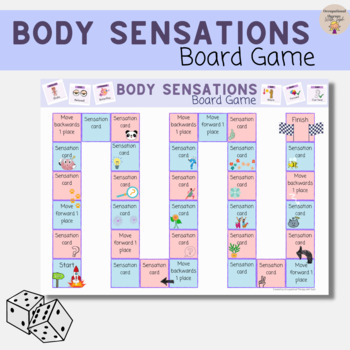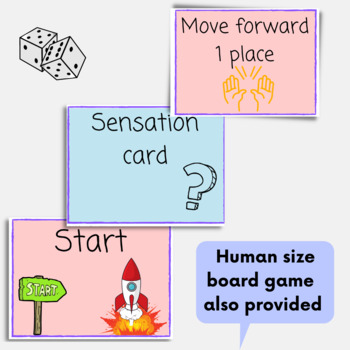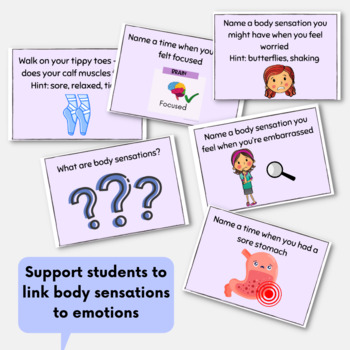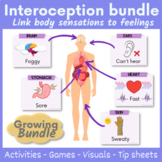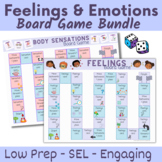Interoception Board Game | Linking body sensations to feelings
- PDF
What educators are saying
Also included in
- Are you looking for engaging interoception activities / games to help your students identify their own emotions? This best selling interoception bundle is full of excellent social and emotional learning (SEL) resources to support students to develop their ability to recognise their own internal bodyPrice $37.80Original Price $47.25Save $9.45
- Are you looking for social emotional learning activities and games that you can play with your students to help them with identifying feelings and emotions? This social emotional learning board game bundle does just that. It teaches children about emotional regulation through identifying feelings anPrice $12.80Original Price $16.00Save $3.20
Description
Are you looking for a fun way to extend your students’ interoception awareness and their ability in identifying feelings and emotions and extend their social emotional learning understanding? This interoception board game is an engaging social emotional learning activity that is designed to help support students to increase their ability to link their body sensations to emotions and feelings.
The best bit? This includes a life size version that you can print out and lay across the floor for the student to walk around as they play - it’s super fun and kiddos love this version.
This is the second of three board game resources in my Emotional Regulation Board Game bundle.
Interoception is one of our 8 senses, which allow us to notice signals from our bodies (body sensations) helping with identifying feelings and emotions. For example, it helps us identify if we are hungry, need the toilet or thirsty. Being able to identify body signals is also essential for emotional regulation.
Body sensations let us know how we are feeling: For example they let us know if we are feeling frustrated (e.g. fast heartbeat + sore stomach = frustrated).
What's included
- Board game - two versions provided (A3 board game and a 'life size’ board game). A fun and engaging social emotional learning activity.
- 27 body sensation cards - questions designed to encourage discussion about identifying feelings and emotions, emotional regulation, non verbal body language and visual cues.
- Dice template
You will need
- Print off board game and sensation cards. Print board game in A3 if possible.
- Cut out sensations cards
- Place cards in a pile with questions facing down (so players can't see the question)
- Dice (Dice template provided if needed)
- Playing piece for each player.
How to play
- Youngest player goes first
- Roll the dice and move piece. Each square will ask you to answer a question card OR move forward / backwards.
- If selecting a sensation card, player must do their best to answer question.
- Players will try to cross the finish line.
Tips for playing
- If students are having difficulty coming up with ideas - try prompting them by giving them two options. For example: when you are frustrated does your heart beat fast or slow, can you think clearly or is it difficult, is your body floppy or tight…
- For the 'name a time cards' if students are having trouble coming up with answers you can provide examples of when you have felt the emotion, e.g. excited when seeing friends, scared of a spider, etc.
- We all experience sensation differently, sometimes students may say something that doesn’t sound right. It’s important to accept all answers, however, try asking them follow up questions if it sounds strange to get more information (there’s normally a good reason behind the answer)
You might also like
Lets connect :)
- Follow me on Instagram for helpful tips
- Join my email list to stay up to date and for freebies
- Follow my store to stay up to date on all new products (which are always discounted for the first 48 hours!)
Disclaimer
These activities are intended for general use. This activity is not intended to replace the advice of a physician or occupational therapist. Information provided should not be used for diagnostic or training purposes. If you require specific support contact your physician or OT. Stop any activity if you are unsure about a child’s reaction or ability.
Copyright Occupational Therapy with Soph
All rights reserved by author. This resource is licensed only for the educator or clinician who purchased it. You may share with your own students or case load.
Questions
Any questions, comments, feedback or requests please reach out to me via TPT or at sophia.occupationaltherapy@gmail.com

